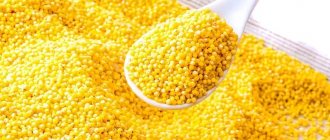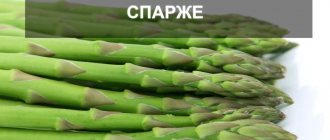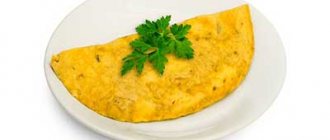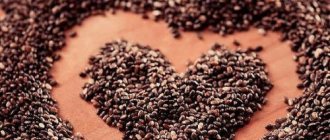A little history
A product came to us from the Middle East; the Greeks and Romans loved it most, and Europeans talked about it. Over time, the delicacy became widespread throughout the world. The technology for making cheese was completely improved only in the Middle Ages. Monks played an important role in this process. It was in the monasteries that different types of products were produced - moldy, spicy, salted, smoked. The monks managed to lay the foundation, and after them more and more new varieties of fermented milk products were invented. Now everyone can enjoy delicious cheese, but it is a rather expensive product.
Top 11 low-fat cheeses for weight loss
Because you're eating a piece of cheese, not a piece of dry matter. It is worth noting that the standard fat content of cheese is 50-60g or 50-60% in dry matter. Many people take the percentage of fat content indicated on the packaging literally. Those. I ate 100g of 50% cheese, which means I got 50g of fat (450kcal). Wow! 40 minutes on the elliptical! But that's not true!
So, if it is indicated that the fat content of Swiss cheese is 50%, this means that 100 g of cheese contains 32.5 g of fat (in cheese of this type, per 100 g of weight there are usually 65 g of dry matter, 50% of which will be 32. 5 g).
| Soy cheese Tofu with dill and garlic | 2.5g |
| Granular cottage cheese “Homemade”, carat | 4g |
| Valio Polar | 5g |
| President light processed cream cheese | 7g |
| Meadow Freshness – Light | 9g |
| Bulgarian cheese | 11g |
| Cheese Cheese Gallery Light | 11g |
| Bonfesto soft cheese “Ricotta” | 11.5g |
| Cheese “Homemade Light”, Karat – natural | 12g |
| Cheese KRAFT PHILADELPHIA light | 12g |
| Brine Sirtaki cheese for Greek salad Classic | 13.3g |
| Cheese “Light”, “Thousand Lakes” | 15g |
| Cheese Casket light | 15g |
| Cheese Arla Natura Light creamy | 16g |
| Cheese President Brynza | 16.7g |
| Cheese Svitlogorye “Fetu” | 17.1g |
| Cheese President Chechil White Straw | 18g |
| Cheese President Chechil White Spaghetti | 18g |
| Cheese Ugleche Pole brine cheese | 18g |
| Product Bellanova brine Delicacy Bella | 18g |
| Cheese Bonfesto Mozzarella | 18g |
| Umalat Unagrande Cacioricotta | 18g |
| Cheese Lactica “Adygei” | 18g |
| President processed cheese Mozzarella sliced | 19.5g |
| Cheese Lactica “Suluguni” | 22g |
| Suluguni cheese Meadow freshness pancakes | 23g |
Soy cheese tofu 1.5-4%
Although it is made on the basis of soy milk, tofu is classified as curd cheese, since in color and consistency it resembles low-fat and unsalted feta cheese.
Tofu is rich in high-quality proteins, so it can successfully replace meat. Calcium, present in abundance in this product, has an excellent effect on the bone skeleton, which makes tofu an ideal product for consumption by older people in order to prevent diseases such as osteoporosis.
In addition, 100 grams of tofu cheese contains only 90 calories, so it is recommended to include it in the diet menu.
Many celebrities have replaced dairy products and cheeses with soy in their diet, so many diets have now been developed that involve a reduced consumption of classic cheeses, while tofu is recommended for daily consumption along with foods of plant origin.
A number of nutritionists also claim its healing properties, because it has already been proven that it helps reduce the level of “bad” cholesterol (LDL) in the blood, which helps prevent many cardiovascular diseases.
With what and how to eat? Suitable for miso soup, salads.
Curd cheese, country cheese, grain cottage cheese - in English. cottage cheese 4-5%
Grained cottage cheese is a type of low-fat cottage cheese. It is a curd grain mixed with fresh, slightly salted cream.
Can be used as an independent dish, as well as for preparing various salads (for example, vegetable salad with grain cottage cheese). In Russia it is sometimes found under the unofficial names “grainy cottage cheese” and “Lithuanian cottage cheese”.
In the USA, Europe and Asia, grained cottage cheese is called cottage cheese. It is often called homemade cheese. At first glance, cottage cheese looks like fresh cottage cheese, but its texture is much softer, one might even say creamy, and its taste is a little saltier.
100g of grain cheese will provide our body with 85 calories and 17g of protein, so nutritionists recommend it even if you follow the strictest diets.
With what and how to eat? Without additives, in salads, in cottage cheese omelettes.
Processed light cheese 7.5%
President cheese has a “melted, creamy light” fat percentage that pleases those who are slimming! There is only 7.5 g of fat per 100 g! Low calorie content is another plus! Cheese for lovers of processed cheese.
With what and how to eat? With porridge and bread.
Whey cheese – ricotta 9-18%
Ricotta is an invariable component of Italian breakfast. This cheese contains no salt. Due to its high nutritional value and impressive composition of vitamins and microelements, ricotta gives a quick feeling of fullness.
This type of curd cheese is recognized as a protector of our liver; it contains methionine, a sulfur-containing amino acid.
With what and how to eat? This cheese is good with fresh vegetables and fruits, honey, ham, pasta, basil, salmon, broccoli. It is customary to stuff pancakes and pancakes with it.
Brine cheese like feta – light cheese, feta 11-18%
This cheese is a traditional product of Greek cuisine. But it is eaten with pleasure in many other countries, including ours. Feta is considered a fatty food, high in cholesterol and has a calorie content of approximately 260 kcal/100 gm.
But not everyone knows that the feta cheese they adore is produced in a light version, although, admittedly, this particular variety is difficult to find on supermarket shelves.
However, the effort you put into searching will be fully worth it. Feta light is usually made from goat's milk and contains only 30% fat, while traditional feta is made from sheep's milk and is then 60% fat.
With what and how to eat? It is usually added to Greek salad along with vegetables and olives, or it is used in Caprese salad, where it replaces mozzarella. Usually served with olives.
These cheeses also go well with tomatoes, bell peppers, onions, watermelon, spinach, rosemary, mint, oregano, tuna, and baked chicken. And when preparing Greek salad they are simply irreplaceable!
Semi-hard light cheese - cheese to the taste of which we are accustomed 9-17%
Light cheese with low fat content, usually labeled as Light, Light, Light, is an affordable delight for those who strive for a healthy lifestyle. These low-fat cheeses have a delicate, pleasant taste of natural milk, a dense, uniform texture, with small, evenly distributed eyes.
Great for people who care about their health. Suitable for making sandwiches and sandwiches, for example, based on bread, as well as for snacking at work or on a picnic.
Such cheeses are just a godsend for those losing weight! Study the back of the package in more detail - the label; in some cheeses, the packaging shows 5% yogurt, not fat!
This type of cheese has a soft, subtle, somewhat piquant taste, is easily digestible and has a high calcium content.
With what and how to eat? For slimming, cheese can be wrapped in lettuce leaves.
Cream cheese, cream cheese 12%
This Philadelphia type (light) cheese consists of pasteurized skim milk and milk fat, whey protein concentrate, cheese culture, salt, whey.
With what and how to eat? With toast, bread, vegetables.
Fresh mozzarella cheese "buffalo" type 18%
Not to be confused with the regular one! Found in the form of white balls soaked in brine, the cheese does not last long. The most delicious one-day mozzarella, but for now you can only try it in Italy.
Buffalo mozzarella is now produced all over the world. Not to be confused with the traditional variety of mozzarella used in pizza. Its fat content is 23%.
With what and how to eat? The best option is with olive oil, ground black pepper, basil and tomatoes.
This cheese can also be quickly marinated in olive oil with herbs, garlic and sun-dried tomatoes and baked.
Low-fat cheese – Chechil 18%
Chechil is a fibrous pickled cheese with a consistency similar to suluguni. It is produced in the form of dense, fibrous threads, twisted into tight braids in the shape of a pigtail, often smoked.
Chechil is often mixed with cottage cheese or other cheese and stuffed into jugs or wineskins. In appearance, this cheese has nothing in common with any other.
It is produced in the form of fibrous threads tied into a bundle.
With what and how to eat? A snack to relieve boredom - in moderation, suitable for salad. Check the amount of salt. As you know, salt retains liquid.
Brine, unripe, young cheeses – Suluguni, Adyghe 18-22%
Traditionally, Suluguni cheese was made only using natural rennet ferment and only by hand without the use of any mechanical devices.
Ready-made cheese can be eaten raw, baked, smoked or fried.
Adygei is a soft cheese with a sour-milk taste and delicate texture. Belongs to the group of soft cheeses without ripening.
With what and how to eat? Pairs with cucumbers, spicy herbs, olives, tomatoes, sweet peppers, honey and green tea.
It fries and melts well. Excellent filling for khachapuri.
Low-fat homemade cheese - recipe
- Skim milk (0.5%) 500 ml
- Low-fat cottage cheese 600 g
- Chicken egg 1 piece
- Baking soda 2 g
- Salt ¾ tsp.
PREPARATION:
- Mix cottage cheese and baking soda, leave the mixture for an hour at room temperature.
- Line a suitable container with cling film. Add milk, salt, raw chicken egg to the cottage cheese, beat the mixture with a blender until smooth.
- Transfer the mixture into a saucepan, heat over low heat, stir. The curd mixture should completely melt, this will happen in 5 - 10 minutes.
- Keep the product on the fire for the same amount of time, stir, but do not bring to a boil.
- Transfer the finished cheese to another container, cover the top with cling film, and leave in the refrigerator for three to four hours.
How to make low-fat homemade cheese for fitness - video
When eating low-calorie cheeses, remember: low-fat does not mean you can eat more. This will lose the whole point of eating low-fat cheese, because... In the dry matter, most cheeses have an exorbitant fat content, reaching 40-50%. You can lose weight on “light” foods if you are careful. What low-fat types of cheese do you know and eat?
Source: https://stroiniashka.ru/negir-sir
Types of cheese
Hard cheese has a fairly dense consistency; it has a natural or waxy crust on top. Such a product matures for 3 months, and some for 3 years. Different varieties differ in taste and aroma.
The following types of cheese can be distinguished:
- Natural – Maasdam, Edamer, Gouda.
- Smoked - Gouda.
- Cheese with a red crust - Doruvael.
- Peasant - Beemster, Stolweiker.
- Cheese with blue mold - Blau Bastianse.
Popular well-known varieties of hard cheese are Dutch, Parmesan, and Swiss. The hardest cheese is natural. Smoked is always more elongated, rounded, most often with a spicy taste.
Such types of product as Cheddar, Grano Padano, Romano, Gruyère, Raclette, Chester, Parmesan have a delicate consistency. But among the domestic ones, the ones that attract the most attention are the Mountain variety, Altai variety, and Kostroma variety.
Composition and calorie content
Hard cheese contains a large number of different nutritional components that are quite beneficial for health. The milk treat contains a lot of protein and is absorbed better than milk proteins. The product also contains a lot of methionine, lysine, and tryptophan.
Please note that the product is made from high-fat milk, it contains a lot of lipids, and therefore is considered quite high in calories.
How many calories are in hard cheese? In Russian - 300 kcal, in Cheddar - 500 kcal.
Hard cheese is rich in mineral components, vitamins - A, C, E, B. The product is valued for the fact that it contains a lot of iron, copper, magnesium, potassium, manganese, phosphorus, calcium.
But the product for the production of which goat’s milk is used is rich in various beneficial bacteria that destroy pathogenic intestinal microflora. Mold hard cheese has a beneficial mold fungus, which produces vitamin B and improves the functioning of the stomach and intestines.
How to choose a good cheese
There is a huge list of manufacturers, but how not to make a mistake and choose a quality product, here are some tips:
- carefully check the expiration date; a spoiled product can seriously harm your health;
- choose products without palm oil and other cheap impurities;
- the cheese should not be slimy in appearance or have a foreign odor;
- The more expensive the product, the higher quality raw materials were used in production.
To learn how Russian cheese is made, watch the video:
No matter how useful the product is, to maintain your normal weight or reduce it, keep an eye on its calorie content and composition. Cheese is really good for the body and is practically harmless, with the exception of individual intolerance to dairy products. Eat healthy, exercise and enjoy food.
Benefit
The product is not only tasty, it has powerful healing powers because it contains many useful substances. Proteins are especially valued as they help restore muscles. Vitamins A and E are beneficial for skin, vision, and hair. Cheese contains a lot of ascorbic acid, which activates the immune system. Due to the fact that the product contains a lot of phosphorus and calcium, you can strengthen bone tissue, joints, and prevent tooth decay.
If you regularly consume durum varieties, you can normalize the level of hemoglobin in the blood. It is also a life-saving food for people with low blood pressure. By consuming the product, you can normalize metabolic processes, so be sure to add this variety to your children’s diet, which is necessary for their full growth.
Fermented milk product is very useful for the central nervous system, because it contains a lot of B vitamins. By eating a piece of cheese, you can normalize your sleep and get out of depression faster.
The product is often included in various diets for weight loss. Only in this case you need to choose varieties that have low or medium fat content. But it is worth considering that cheese made from full-fat milk is healthier.
What is Tilsit cheese and what is it eaten with?
Tilsiter or Tilsit cheese is a moderately hard dairy product with uneven holes and cracks, which has a pleasant light yellowish tint of flesh and a dense dark brown crust. The recipe for the delicacy was developed in the 19th century in Switzerland, and the name of the product comes from the name of the city where the first cheese production was launched.
general characteristics
To make Tilsiter cheese on an industrial scale, pasteurized cow's milk is used. 10 kg of product is obtained from 110 liters of raw materials.
The fat content of milk cheese varies between 30-60%. It is used as a regular table variety, eaten as an independent delicacy, or as a component of salads, sandwiches, pies, main courses and sauces.
Interesting fact! You can often find cumin or black pepper in the composition of Tilsiter milk cheese. The classic recipe does not contain such ingredients, but they successfully complement the creamy taste, making tilsiter an ideal snack for dark beer. For this reason, many manufacturers today are changing the usual recipe.
Historical reference
For the first time, hard Tilsiter cheese was brewed a few kilometers from the city of Tilsit by the hands of Frau Westphal, a big fan of cheeses and other dairy products.
At first, the woman used cumin and ground black pepper to add some piquancy to the delicacy, but in the end she decided to abandon such additives, because they interrupted the milky taste. Subsequently, Westphal opened her own cheese factory, where Tilsit cheese was produced on an industrial scale.
The technology for producing hard cheese from Tilsit was brought to perfection, and eventually the cheese was made by self-pressing. Standard heads weighed 5 kg and were soaked in saline solution for 3 days.
Since the surface of the delicacy was lubricated with special compounds containing cheese bacteria, fermentation proceeded faster, and the product itself acquired piquancy. The cheese was then given 5-7 weeks to mature in a damp cellar without sunlight to develop a reddish-brown crust on the surface.
Types of cheese
Tilsiter today is produced in three varieties:
- Green label. Hard cheese of this brand is made using pasteurized milk, and the main feature is the percentage of fat content and flavor. The product is characterized by a soft creamy taste without any foreign impurities or aromas.
- Red label. The product is prepared from unpasteurized milk and has a characteristic fresh milky smell and piquant taste.
- Yellow label. This brand of hard milk cheese is prepared using pasteurized milk in combination with cream, and is therefore characterized by high fat content and a pronounced milky taste.
Benefits and possible harm
Tilsiter milk cheese contains fatty acids, minerals, and vitamins that are beneficial for human health. It allows you to quickly satisfy hunger, giving a person a feeling of fullness for several hours. However, there is an opinion that the harm from consuming such a product may be no less.
Some nutritionists insist that such hard cheese made from milk has a high concentration of salt, so abuse of the product can lead to a shift in the average daily balance of nutrients.
And this is fraught with disruption of normal blood circulation, swelling of the limbs, excessive fatigue, and headache. Combining tilsiter with fresh vegetables, grains or fruits will help to avoid such phenomena.
Also, some scientists believe that dairy products do not strengthen bones due to their high calcium content, but rather contribute to its leaching from the skeletal system. Therefore, a large amount of tilsiter in a person’s diet can cause frequent fractures.
But the main danger is that unscrupulous farmers use antibiotics and animal hormones that accumulate in milk when caring for cows.
No amount of cleaning will rid the raw material of such impurities, so hard cheese based on such liquid can provoke hormonal imbalance, gastrointestinal disorders, and mental problems. Therefore, give preference to cheeses made from milk of trusted brands.
Composition and calorie content of Tilsiter cheese
The energy value per 100 grams of milk product is as follows:
- calorie content ⎼ 340 kcal;
- proteins ⎼ 24.41 g;
- fats ⎼ 2.98 g;
- carbohydrates ⎼ 1.88 g.
Recipe
Hard tilsiter cheese from milk can be easily prepared with your own hands at home, if you have the right ingredients and equipment at your disposal. First of all, prepare the following products:
In addition, you will need a thermometer, a 10-liter saucepan and a mold for hard milk cheese.
The instructions for performing operations to create cheese from milk are as follows:
- The milk is pasteurized by heating it to 74°C, but not bringing it to a boil, and then cooling it. To allow the milk to curdle, the starter is dissolved in 100 ml of warm water and left to mature for 30 minutes. The milk is heated again, but now to 37°C, in order to activate the lactic acid bacteria of the starter culture that is mixed with it. Next, you need to dissolve the rennet in 50 ml of water and add it to the cow's milk, stirring the liquid.
- After 45 minutes, a cheese curd will form on the surface of the raw material. Be sure to wait until it becomes thick enough so that you can easily cut it with a knife. Cut the cheese curd into cubes with sides of 1.5 cm, making longitudinal and transverse movements with a knife. Drain the whey after 10 minutes, then simmer the mixture over low heat for 10-15 minutes.
- Be sure to stir the cheese cubes until they reach a temperature of 37-38°C, at which point they should break down into large grains. Next, drain another 3 liters of liquid and add 2.5 liters of boiled water into the container. Subject the composition to a second heating for 12 minutes at the same temperature. At the end of the procedures, the grains of the future hard cheese will decrease in size by 2 times.
- Place the raw materials in the mold, wrapping it in a warm blanket. After some time, the mold is turned over and the dairy product is pressed under a pressure of 1 kg, and after 2 hours - under 4 kg.
If I use homemade milk from trusted suppliers in the process of making tilsiter, I can skip the pasteurization procedure. If I am not entirely sure of the quality of the raw materials, I definitely pasteurize the milk.
Oleg Ivanov, cheese maker
Bottom line
Tilsiter is an original milk cheese from Switzerland, which is classified as a hard cheese. It has a spicy taste, a special aroma and a dark brown crust that is characteristic only of it. If desired, such a milk product can be made with your own hands, but the process requires some perseverance and care.
Source: https://SirovaRus.ru/syry/trerdie/tilziter
Harm
Sometimes even the most expensive type of hard cheese can be harmful. The product contains tryptophan (an amino acid), which causes headaches and nightmares. If you constantly consume this fermented milk product, everything can end in atherosclerosis, hypertension, and high blood cholesterol levels. The product is also not recommended for overweight people.
Spicy varieties of cheese are prohibited for people with stomach and intestinal problems. Mold cheese should not be consumed by a pregnant woman. Some types contain a lot of harmful bacteria that can lead to listeriosis, a disease that can lead to stillbirth and miscarriage.








